1. What is the Facebook algorithm?
To begin with, let's understand the term algorithm, what is an algorithm concretely?
An algorithm is a process that performs a set of steps one after the other according to a set of rules. In the age of digital technology and IT giants, the term has become commonly associated with technology companies, especially Facebook, Google, Amazon, etc.
Facebook therefore uses an algorithm using a programming language to establish a certain number of rules to present you with content that corresponds to a certain number of criteria: your interests, your geographic location, your language, your consumption habits, etc.
These are the criteria we use to target the right Internet users when we do advertising. Facebook advertising.
2. How does the Facebook algorithm work for users?
Simply explained, the way the Facebook algorithm works looks like this:
When a Facebook user opens their news feed, the algorithm determines the order and content of the posts the user sees.
To do this, it evaluates each message and sorts them in a non-chronological order based on the interests of the user and their friends. This process takes place every time one of Facebook's 2.9 billion users updates their News Feed.
What you need to understand is that Facebook's algorithm is constantly evolving. The algorithm in question obeys a number of rules but also uses artificial intelligence to evolve quickly.
One of the challenges that Facebook has faced in recent years is misinformation. This is a direct consequence of the massive use of artificial intelligence and the lack of control on the part of the teams at Facebook. More and more controls are therefore being put in place to avoid false information.
3. What is Facebook's goal with its algorithm?
Like any business, Facebook's goal is to make money. To do this, it uses its platform to display ads to its users based on a variety of criteria.
With all the information that users give to Facebook by browsing the social network, downloading the application etc, Facebook gives access to many advertising personalization features to advertisers based on what interests you.
Since Facebook sells your attention span (when you use Facebook and you look at an ad, that's your attention span), it has a vested interest in keeping you on the platform as long as possible.
Keep this in mind when you're building a social media strategy. You need to give Facebook what it wants, and that's quality content that keeps people engaged and on the social network for a long time.
4. How to outsmart algorithms in 8 tips and increase your visibility?
Here is a list of tips from our agency of social media experts to help you take advantage of the Facebook algorithm and generate maximum interactions.
1. Regularity and consistency should be your watchwords.
Facebook will ask you to be regular. An active page is a highlighted page. In addition to providing regular content, the latter must be varied. Facebook experts recommend at least one publication per day. That's a lot of work!
If you manage to produce regular content, but stop all activity during your 2 weeks of vacation, your efforts will be reduced to nothing. So you need to make sure you have tools in place or a team of community managers to take over when you are on vacation or busy with another project.
[article_form]
2. Create authentic, high-value content
As people spend more and more time on social media and across a variety of them, they are increasingly able to identify authentic content from not.
In addition to this, Facebook states in its best practices that its community values “accurate and authentic content.” And as we said earlier, what users want, Facebook gives them.
So, to create authentic content, be as honest as possible. We stop the publications where we add three tons, it does not please neither the Internet users nor the algorithm.
So avoid:
- content that spreads false information: we told you at the beginning of the article, Facebook is at war against all forms of disinformation.
- false content: you know the magic pill that makes you lose weight while continuing to eat like an ogre or the woman who has just given birth and looks like a red carpet star.
- copied contents
2. Generate “active” interactions
Understand that not all interactions are worth the same to the Facebook algorithm. Users will be more likely to see updates related to posts they interact with (reaction, like, comment, share, etc.)
So we're going to see how to generate maximum interactions.
3.1 Use reaction emojis to gain more visibility in Facebook's algorithm
For a few years now, it has been possible for Internet users to react to your publications via emojis. Encouraging Internet users to react to your publications with these reactions is therefore interesting and highlights them on the news feeds of your fans and their friends.

There have been 7 since the emergence of the heart hugging emoji, the “Care,” which was created during the COVID-19 outbreak. The primary goal of this reaction is to support others, but especially local businesses.
Be careful, some practices via these reactions are not welcome and can impact your marketing efforts. Here are some tips:
- Do not overuse these visual reaction emoticons. Facebook explains it very well, using them outside the context of "the Facebook user interface or for creative purposes" will negatively impact your post.
- Do not modify or customize these reaction emoticons if you insert them into your visuals.
- Do not consider them as “voices” for polls or votes. Reactions must express the sincere opinion of Internet users and must not be used for other purposes. The type of publication below will therefore not be highlighted by the platform. Well, for this point, I have just given you the official version, however, in practice, it generally works quite well to create engagement.
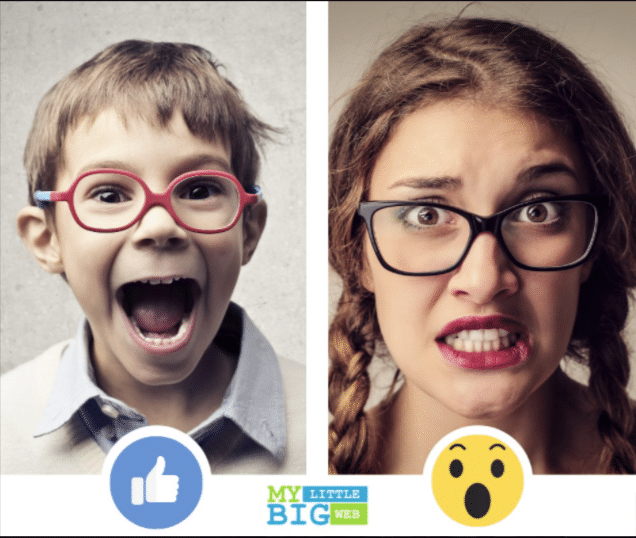
3.2 Encourage people to leave comments to gain favor with Facebook's algorithm
Likes are good, reactions are good, but comments are better.
Above all, do not neglect the response to your comments. In addition to maintaining a link with your community, Facebook will understand that you are a serious and interactive page with which your fans like to discuss. Remember that the most recurring publications, on which you can come across several times (to your great happiness), as users, are the publications with the most comments.
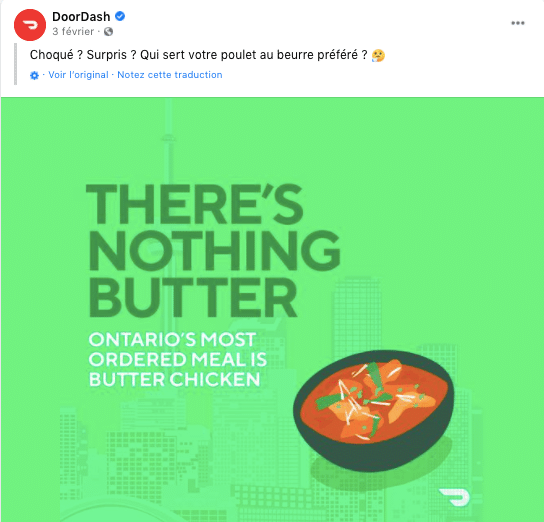
The more people comment and discuss a post, the more Facebook will promote it.
Facebook's goal, let's remember, is to keep Internet users on its social network for as long as possible, so that they are more subject to advertisers' ads. A lot of comments corresponds to a lot of reading, time spent writing a response and therefore time online. It also means that your content interests a large number of people, so it's worth presenting it to even more people.
3.3 Sharing posts brings more Likes
If there is one thing that is worth more than all the elements presented above for the Facebook algorithm, it is the sharing of publications.
A share necessarily means that your publication will be visible on the news feed of all the friends of the Internet user who carried out the action. In other words, a reaction or a comment left on your publication will not have as much of an impact as a share. A share is also often accompanied by a small description, the friends will in turn react via this publication by commenting or reacting. In fact, sharing leads to more reactions. While the opposite is not necessarily true.
Let's look at these two publications from the digital media FRAICHES, one of them was reshared by multiple Internet users, which led to more reactions and comments. The second one has fewer reactions since the number of shares is lower.
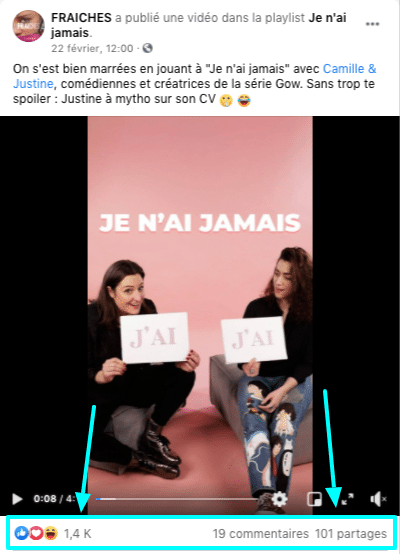
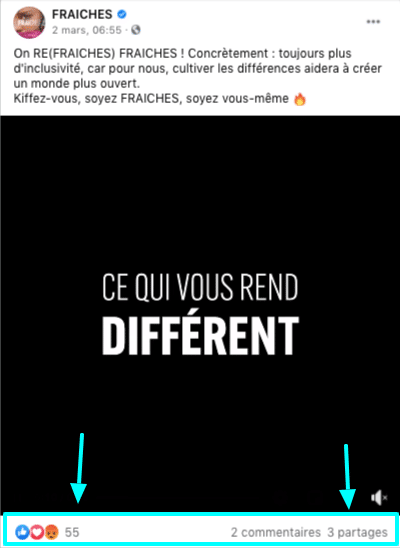
Encourage people to reshare your posts.
To do this, talk about current topics that could have a direct link with your business. Are you a beauty brand? That's good, International Women's Day is on March 8th, it's in your best interest to communicate (by doing it well, of course), and to encourage your fans to reshare your publications.
The more your fans share, comment and react, the more Internet users you will reach, which will save you from having to invest an advertising budget on Facebook.
4. Schedule your posts directly on Facebook
Use Facebook's internal programming. Facebook's algorithm wants you to stay on Facebook, watch Facebook, eat and drink Facebook. And it's the same when you schedule posts.
Very easy to use, Facebook allows you to schedule your posts directly. Some specialists explain that using external management tools like Hootsuite is unfavorable for the Facebook algorithm. We can therefore only advise you to schedule your posts directly on the platform.
If Facebook's goal is to keep the Internet user on its platform, as a company you are also considered Internet users. The goal for the company is to centralize all types of activities. This is why messaging is directly integrated into the platform in the same way as the promotion space.
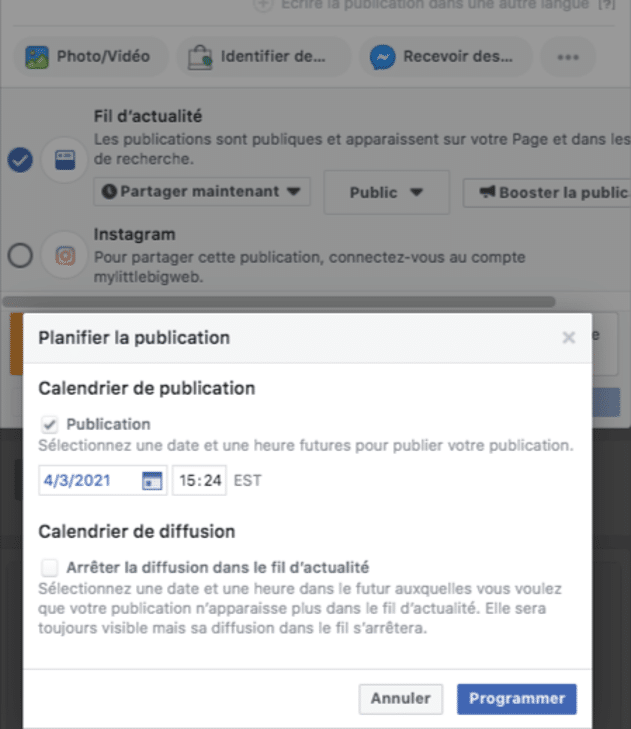
5. Focus on visual content, especially videos
Visual content in general, but especially videos, tend to boost the engagement rate of your posts.
On the one hand, video publications are more enjoyable for Internet users, but they are especially favored by the Facebook algorithm. At least, those directly published on the social network, that is to say via Facebook Watch and not links imported from Youtube. Once again, Facebook favors so-called "native" content.
We can see it in our videos, the number of minutes viewed and the number of views overall are much higher than for our posts without visuals.
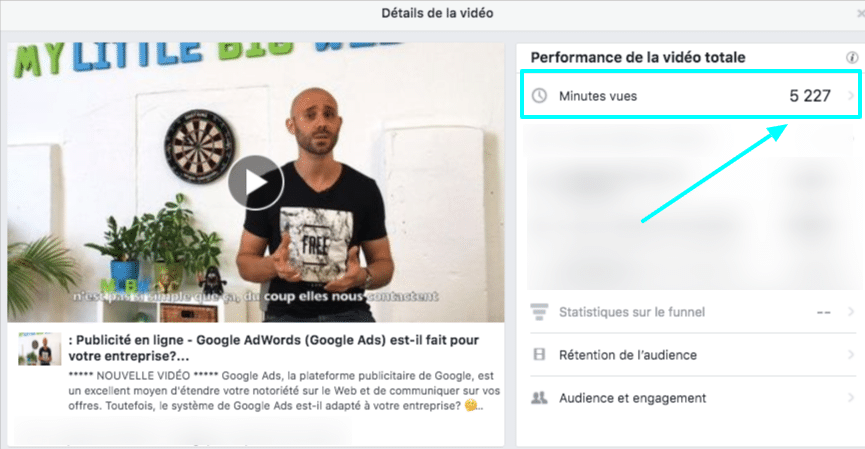
Additionally, videos on Facebook play automatically as you scroll through posts. This makes it easier to increase the number of views of a post, and more views means more exposure from Facebook.
Photos and gifs for more enjoyable and light-hearted content, which Facebook's algorithm values a lot.
Internet users are more sensitive to visual content, especially photos and gifs. We advise you to always insert a visual. Of course, it will take you more time than for classic posts, but you will thank us when Facebook puts you forward.
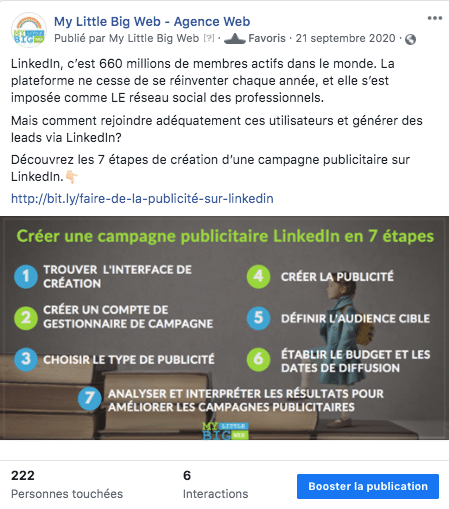
Be careful, a visual must always be accompanied by a text. Never leave an image without text. Facebook robots work like Google's, to offer your publication more to Internet users, they must understand its theme and content. Don't forget to insert ALT tags behind your photos! To do this, simply click on edit image and insert an alternative text.
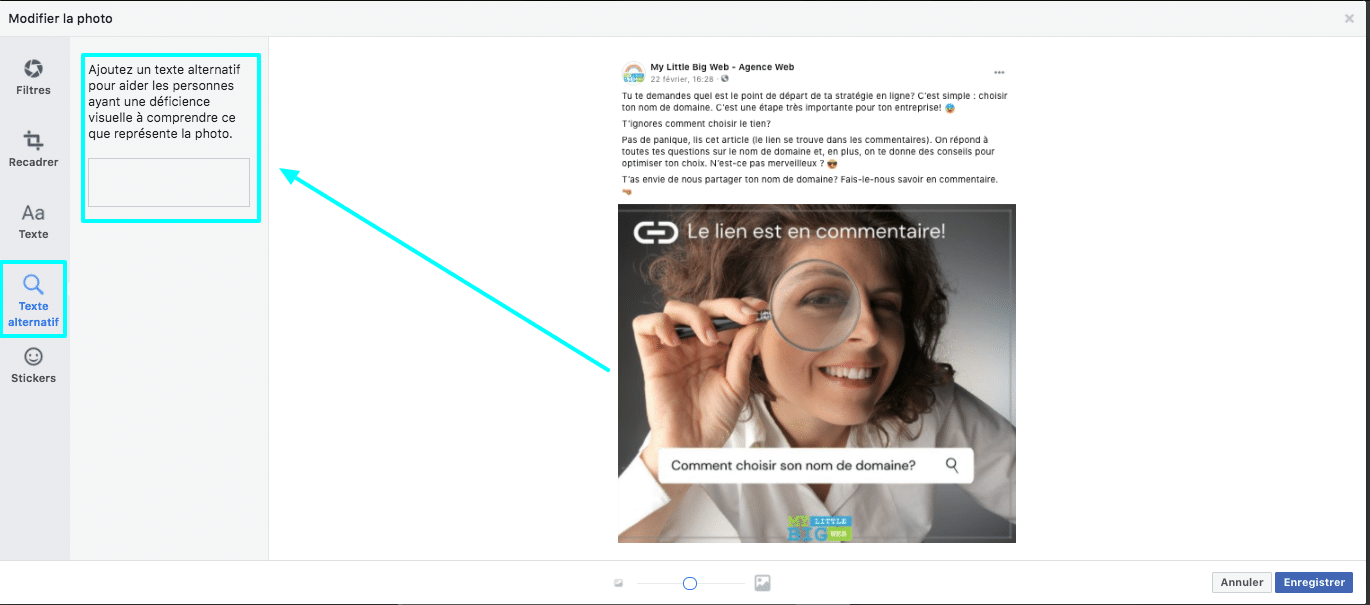
In addition, a study on social media trends by HubSpot has proven the importance of using memes and GIFs. When on Facebook, Internet users are looking for engaged and engaging content, but also light and funny content. And this involves the use of original and modern visuals, including memes or GIFs.
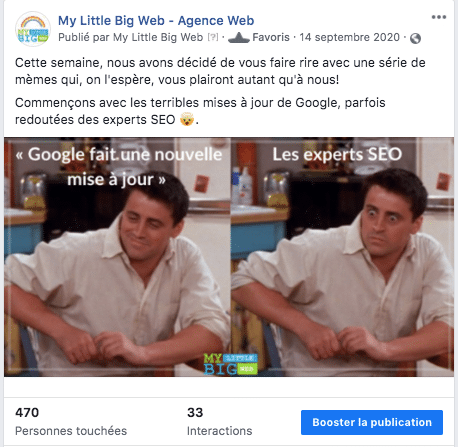
6. Focus on stories and Reels: short videos
As you will have understood, the medium to favor is video and in particular short videos.
According to recent trends, short videos are the preferred and most interactive format among users, whether in the news feed or in Stories.
This is why major social media platforms have introduced new video features, such as Instagram Reels, which launched in 2020.
Taking advantage of this change in consumption patterns (and especially to avoid being overtaken by the competition), Facebook has also launched into the short video market.
6.1 So how do you use Stories and Reels for business?
The Reels
Facebook Reels are a way to improve your brand visibility by creating short, engaging videos that can be educational, humorous, or promotional in nature.
The goal is to grab audience attention and produce content that appeals to a wide range of Internet users.
The Stories
Facebook Stories are a way to engage with your audience. They offer the opportunity to share interesting and personal content with your followers. Take advantage of this type of format to show how things are going within your company. Are you planning an event? Don't hesitate to share the organization.
Keep in mind though that Stories are only available for a short period of 24 hours, so don't overuse them or put too much effort into editing.
7. Less promotional content, more storytelling to seduce the Facebook algorithm
People log on to Facebook before and after work. You can imagine that you can't promote your product the same way you do on TV or in newspapers. You have to promote it in a different, lighter way. The goal of social media is to create a community. The stronger the community, the more it will respond to your posts and the more you will be put forward to people with similar interests.
Look at this page of the Aritiza brand. With nearly 204,777 fans, the page struggles to exceed dozens of likes. Why? Simply because each publication has a direct promotional objective. Each publication is accompanied by a link to the brand's website. This is not what the Internet user is looking for, nor is Facebook and its algorithm.
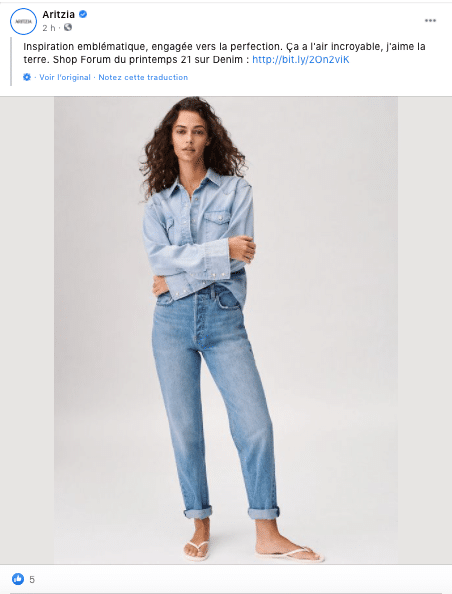
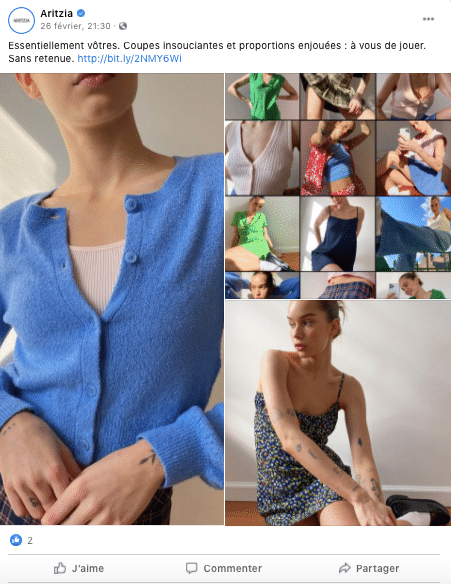
Facebook is not a typical advertising platform (in fact, it is a social network before being an advertising platform). Sure, your goal is to generate more traffic to your website and more sales, but is that what the Internet user is looking for? The answer is no. The Facebook algorithm responds to the needs of Internet users. They do not like pages that only publish advertising content, so Facebook will no longer promote them.
You need to tell a story. Who are you? What are your connections to current events? Are you a winter coat seller? Ask people how they survive the freezing cold. Are you a beer seller? Ask them what time their aperitif with friends starts. In short, don't limit yourself to promoting your product, go much further. You need to reserve posts for the simple purpose of exchange and not promotion.
Let's take a good example in terms of mastering the Facebook algorithm, with the best student par excellence: Netflix. By publishing this type of content, Netflix is not directly saying, "go to our site and watch a series, get a subscription for your whole family and stop illegally downloading series". The company is just telling you, which series do you prefer and then you will say to yourself: "Oh I really want to go watch an episode of Modern Family".
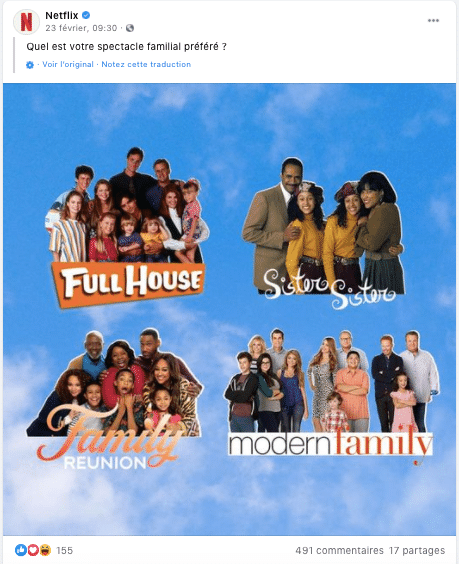
8. Ban external links from your Facebook posts
50% of posts published on Facebook contain a link to an external site. As you can imagine, this is not advantageous for Facebook. Its algorithm will therefore put you at the bottom among the millions of posts published each day. No one will see your publication, sorry.
Our advice is to share your links in a comment while inserting a visual that indicates that the links are located there. Of course, the click rate will be impacted since the Internet user must make a certain effort to arrive on your link, but by doing this, your publication will be more visible.
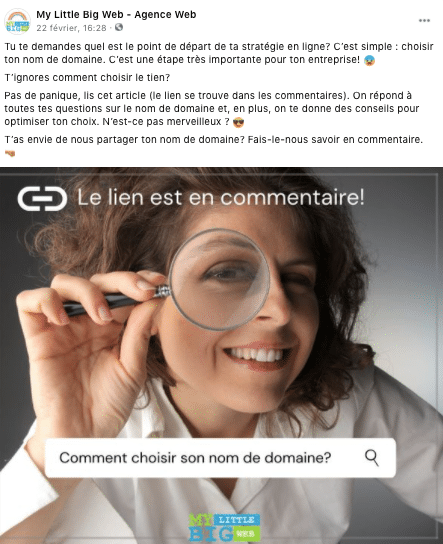
How to tame the Facebook algorithm?
Taming the Facebook algorithm is not an easy task. We have just given you 8 tips that will allow you to highlight your Facebook pages. But be careful, there are many updates and today's tips may be outdated tomorrow, who knows? Just like SEO, your social media management must be handled with a master's hand and requires special attention.
If you have limited time to generate traffic and interactions organically on Facebook, you always have the option of running Facebook advertising campaigns. This will allow you to effectively target the audience you are interested in and quickly.
You can call on our web marketing experts, who will help you with your advertising campaigns and community management. Fill out our contact form, or call us at +216 25 432 886


